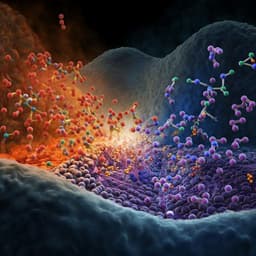
Medicine and Health
BNT162b2 mRNA vaccine elicited antibody response in blood and milk of breastfeeding women
M. Rosenberg-friedman, A. Kigel, et al.
This compelling study by Michal Rosenberg-Friedman and colleagues reveals the dynamics of vaccine-specific antibody responses in lactating women after receiving the Pfizer-BioNTech COVID-19 vaccine. Discover the rapid synchronization of antibody levels in both breast milk and serum, stabilizing two weeks post-vaccination, including potent IgG and IgA antibodies.
~3 min • Beginner • English
Related Publications
Explore these studies to deepen your understanding of the subject.







